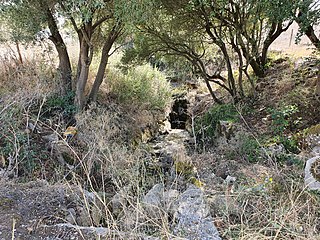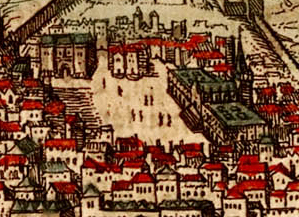 W
WThe history of Lisbon, the capital city of Portugal, revolves around its strategic geographical position at the mouth of the Tagus, the longest river in the Iberian Peninsula. Its spacious and sheltered natural harbour made the city historically an important seaport for trade between the Mediterranean Sea and northern Europe. Lisbon has long enjoyed the commercial advantages of its proximity to southern and extreme western Europe, as well as to sub-Saharan Africa and the Americas, and today its waterfront is lined with miles of docks, wharfs, and drydock facilities that accommodate the largest oil tankers.
 W
WThe 1531 Lisbon earthquake occurred in the Kingdom of Portugal on the morning of 26 January 1531, between 4 and 5 o'clock. The earthquake and subsequent tsunami resulted in approximately 30,000 deaths. Despite its severity, the disaster had been mostly forgotten until the rediscovery of contemporary records in the early 20th-century.
 W
WAbada, also known as Bada or Ibada, was the name given to a female Indian rhinoceros kept by the Portuguese kings Sebastian I and Henry I from 1577 to 1580 and by Philip II of Spain from about 1580 to 1588. She was the first rhinoceros seen in Europe since the one sent as a present from the King of Portugal, Manuel I, to Pope Leo X in 1515, who died in a shipwreck off the coast of Italy in early 1516, immortalised as Dürer's Rhinoceros.
 W
WÁlvaro was the second Bishop of Lisbon from 1166 until his death. He is buried in St. James' Chapel in Lisbon Cathedral.
 W
WThe archaeological site of Colaride, is a Roman necropolis in a natural cave, located in the Portuguese civil parish of Agualva e Mira-Sintra, municipality of Sintra.
 W
WThe Coat of arms of Lisbon is composed of a golden shield with a black silver lined sail ship on a sea of seven wavy stripes green and silver. At both ends of the ship, two ravens, each pointing to the center of the shield. A golden mural crown of five towers surrounded by the collar of the Order of the Tower and Sword and by a white scroll with the motto "MUI NOBRE E SEMPRE LEAL CIDADE DE LISBOA" in black.
 W
WThe Constituent Cortes of 1820, formal title The General and Extraordinary Cortes of the Portuguese Nation, also frequently known as the Sovereign Congress or the Cortes Constituintes Vintistas, was the first modern Portuguese parliament. Created after the Liberal Revolution of 1820 to prepare a constitution for Portugal and its overseas territories, it used a different system from the traditional General Cortes for choosing representatives, and the three traditional feudal estates no longer sat separately. The Cortes sat between January 24, 1821 and November 4, 1822 at the Palácio das Necessidades in Lisbon. The work of the Constitutional Cortes culminated in the approval of the Portuguese Constitution of 1822.
 W
WDe expugnatione Lyxbonensi is an eyewitness account of the Siege of Lisbon at the start of the Second Crusade, and covers the expedition from the departure of the English contingent on 23 May 1147 until the fall of Lisbon on 28 June 1148. It was written in Latin by one Raol, an Anglo-Fleming and probably a chaplain of Hervey of Glanvill in the army from East Anglia. It is an important source for the organisation of the crusade, especially among the middle ranks of society. An English translation by Charles Wendell David appeared in 1936 and was reprinted in 2001.
 W
WThe Estaus Palace in Rossio Square, in Lisbon, was the headquarters of the Portuguese Inquisition. The original palace was built on the north side of the square around 1450 as lodging for foreign dignitaries and noblemen visiting Lisbon.
 W
WThe flag of Lisbon is the municipal flag of Lisbon, consisting of a gyronny alternating between black and white defaced with the coat of arms of Lisbon in the center. For civil use the flag is flown without the coat of arms.
 W
WFrancisco Xavier de Mendonça Furtado (1701–1769) served in Portugal's armed services rising in rank from soldier to sea-captain, then became a colonial governor in Brazil and finally a secretary of state in the Portuguese government. His major achievements included the extension of Portugal's colonial settlement in South America westward along the Amazon basin and the carrying out of economic and social reforms according to policies established in Lisbon.
 W
WThe Holy Martyrs of Lisbon were three Christian siblings, Verissimus, Maxima, and Julia, executed in Olisipo in the Roman province of Lusitania, during the Diocletianic Persecution.
 W
WThe Hospital Real de Todos-os-Santos was a major hospital in Lisbon, Portugal. The hospital was built between 1492 and 1504 and was destroyed in the 1755 Lisbon earthquake, along with most of the city. It was never fully rebuilt and was finally demolished in 1775.
 W
WThe House of the Twenty-Four was a corporation in the pre-Constitutional Kingdom of Portugal that functioned as a deliberative assembly of craftsmen, with significant political power in local government.
 W
WThe Igreja de São Roque is a Roman Catholic church in Lisbon, Portugal. It was the earliest Jesuit church in the Portuguese world, and one of the first Jesuit churches anywhere. The edifice served as the Society's home church in Portugal for over 200 years, before the Jesuits were expelled from that country. After the 1755 Lisbon earthquake, the church and its ancillary residence were given to the Lisbon Holy House of Mercy to replace their church and headquarters which had been destroyed. It remains a part of the Holy House of Mercy today, one of its many heritage buildings.
 W
WLisboa e Vale do Tejo was one of the five regions of Portugal. Today two of the subregions are in the new Lisboa Region, two in the Centro Region and one in the Alentejo Region.
 W
WThe Lisbon massacre was an incident in April, 1506, in Lisbon in the Kingdom of Portugal in which a crowd of Catholics, as well as foreign sailors who were anchored in the Tagus, persecuted, tortured, killed, and burnt at the stake hundreds of people who were accused of being Jews and, thus, guilty of deicide and heresy. This incident took place thirty years before the establishment of the Portuguese Inquisition and nine years after the Jews were forced to convert to the Catholic Church in 1497 during the reign of King Manuel I.
 W
WMunicipium Cives Romanorum Felicitas Julia Olisipo was the ancient name of modern-day Lisbon while part of the Roman Empire.
 W
WPaulo António de Carvalho e Mendonça (1702–1770) was a Portuguese priest and a cardinal, a court official who served as supervisor of the house and properties of Queen Mariana Vítoria, President of the Senate of Lisbon, a Canon of Lisbon Cathedral, Grand Prior of the College of Guimarães and Inquisitor-General of the Holy Inquisition.
 W
WRibeira Palace was the main residence of the Kings of Portugal, in Lisbon, for around 250 years. Its construction was ordered by King Manuel I of Portugal when he found the Royal Alcáçova of São Jorge unsuitable. The palace complex underwent numerous reconstructions and reconfigurations from the original Manueline design, ending with its final Mannerist and Baroque form.
 W
WThe Royal Patriarchal Music Seminary of Lisbon was founded in 1713 by Portugal's king João V (John) (referred to, but not always in a complimentary manner, with soubriquets such as "The Magnanimous", "The Magnificent", "The Portuguese Sun King", and less flatteringly, "o Freirático" ) to train singers for his Royal Chapel of Saint Thomas at Ribeira Palace . Its role was similar to that of other schools which for some centuries had been training singers and musicians for European abbeys, cathedrals, parish and collegiate churches, and court chapels. Over time, its influence expanded as it produced singers, instrumentalists and composers of merit, many of whom took on careers in sacred and secular music including opera outside Portugal.
 W
WSão Pedro de Alcântara was a Franciscan monastery in the Bairro Alto district of Lisbon, founded in the late 17th century. It is a large Baroque building, with a highly decorated chapel.
 W
WThe Siege of Lisbon, from 1 July to 25 October 1147, was the military action that brought the city of Lisbon under definitive Portuguese control and expelled its Moorish overlords. The Siege of Lisbon was one of the few Christian victories of the Second Crusade—it was "the only success of the universal operation undertaken by the pilgrim army", i.e., the Second Crusade, according to the near contemporary historian Helmold, though others have questioned whether it was really part of that crusade. It is seen as a pivotal battle of the wider Reconquista.
 W
WThe history of the Tejo Power Station, operating from 1908 to 1975 in the Belém district of Lisbon, Portugal.
 W
WThe entire operation of the Tejo Power Station, as well as the evolution of electricity in the city of Lisbon, was only possible thanks to the work carried out by the people who set all of the machinery in motion, day and night, guaranteeing that the coal-fired power station never interrupted its production.
 W
WThe Treaty of Lisbon is an international agreement that amends the two treaties which form the constitutional basis of the European Union (EU). The Treaty of Lisbon was signed by the EU member states on 13 December 2007, and entered into force on 1 December 2009. It amends the Maastricht Treaty (1992), known in updated form as the Treaty on European Union (2007) or TEU, and the Treaty of Rome (1957), known in updated form as the Treaty on the Functioning of the European Union (2007) or TFEU. It also amends the attached treaty protocols as well as the Treaty establishing the European Atomic Energy Community (EURATOM).
 W
WWorld Youth Day 2023 will be a Catholic festival held in Lisbon, Portugal, and was originally scheduled to be celebrated in summer 2022. This was announced by Pope Francis and Cardinal Kevin Farrell at the end of the closing Mass of World Youth Day 2019 in Panama City, Panama. Originally scheduled to be held in August 2022, the Holy See announced on April 20, 2020, that it will be postponed until August 2023 due to the 2019–20 coronavirus pandemic.